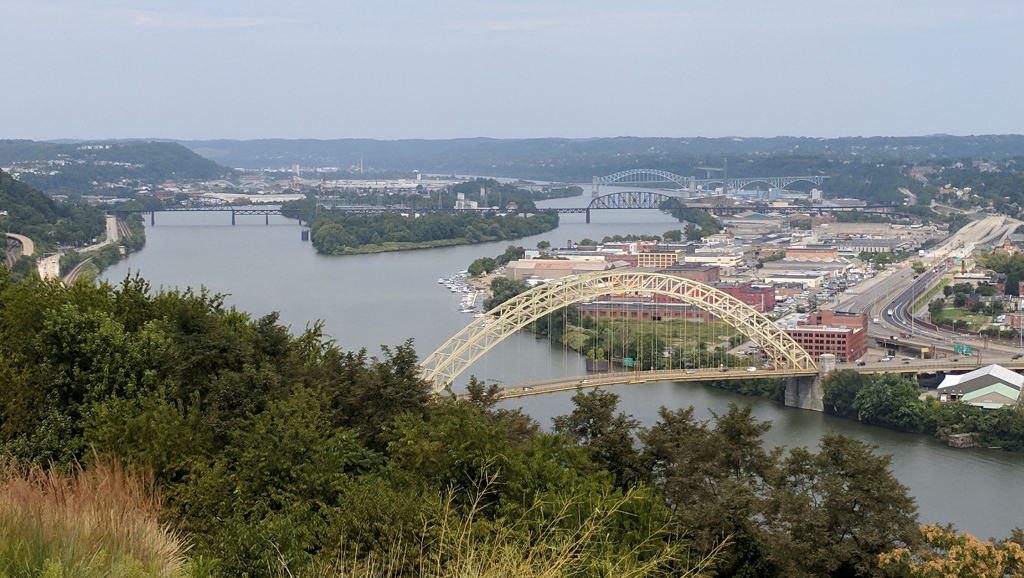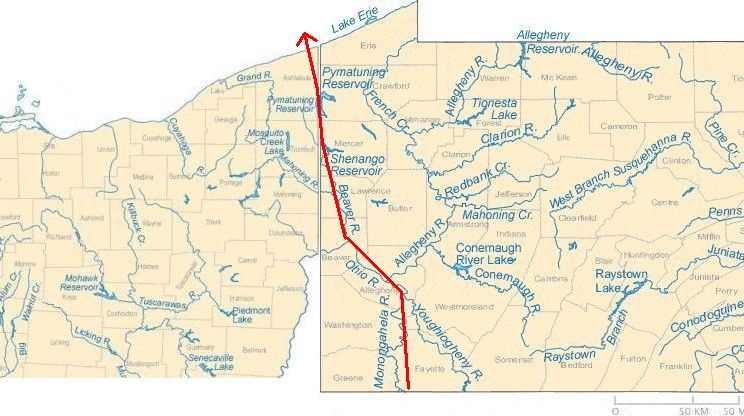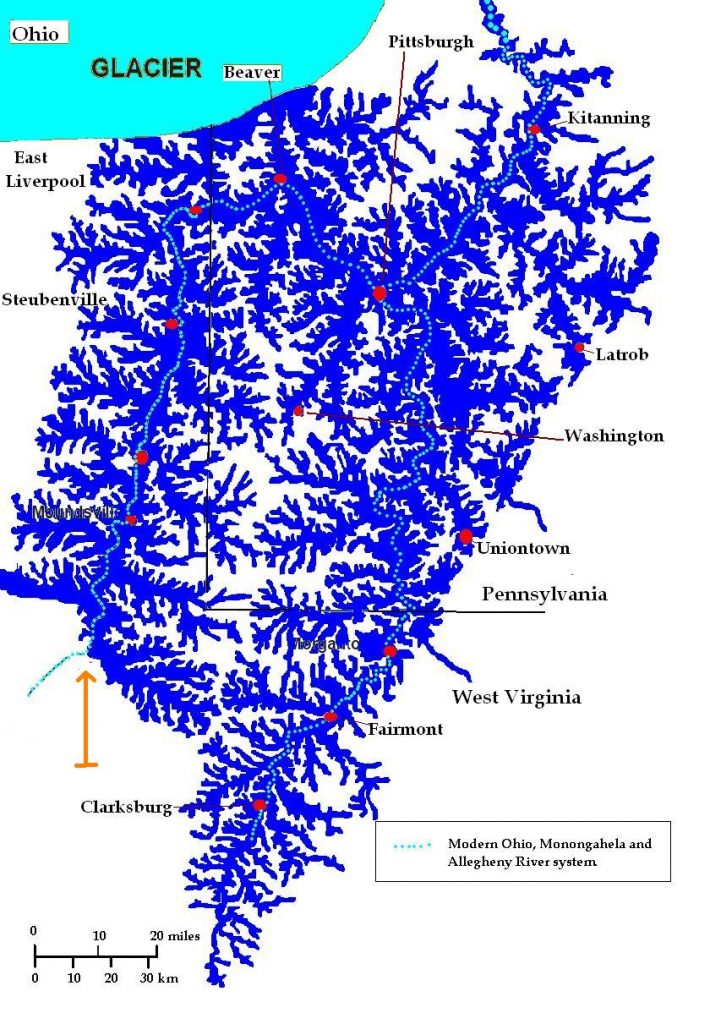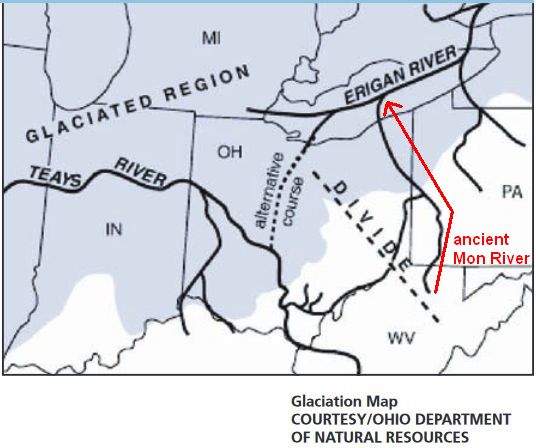
Two million years ago the Monongahela was a mighty river. Instead of being a short tributary of the Ohio and draining to the Gulf of Mexico, it flowed north to where Lake Erie is today and then to the Atlantic. This stretch of the Ohio River in Pittsburgh was not the Ohio at all. It was the Monongahela.
Here’s how the mighty Mon River lost its crown and the reason why the Ohio turns south at Beaver, Pennsylvania.
Before the Pleistocene era, the Monongahela River drained 75% of today’s Ohio, Allegheny and Monongahela watersheds as it flowed north from West Virginia to the Lake Erie area (roughly the red arrow path below).
Back in those days the Ohio River was just a tributary whose northernmost point was in Pennsylvania where it joined the Mon. The Beaver and Shenango Rivers did not exist as they do today. Their valleys carried the Monongahela north.

But then the climate changed. The Great Ice Age began.
Glaciers blocked the Monongahela’s northward flow so the river backed up and formed Lake Monongahela. The pale dashed lines show the paths of our rivers today bending away from the prehistoric glacier.

Eventually Lake Monongahela rose so high that it breached the lowest barrier in the Ohio valley near present day New Martinsville, WV (see orange arrow).
The Ohio started flowing “backwards.” It cut the Ohio River valley deeper, orphaned the northern Monongahela and reversed its flow, creating the Shenango and Beaver Rivers.
All of this was helped by the huge volume of water joining the Mon from the re-formulated Allegheny River watershed. The Upper and Middle Allegheny river systems used to flow north too, but were also blocked by glaciers. Their proglacial lakes overflowed and joined the Lower Allegheny River flowing into the Ohio watershed.
And so the Monongahela River became a lowly tributary of the Ohio.
Climate change is big stuff. When it gets cold it changes major rivers. When it gets hot … Well, we’ll find out.
UPDATE: See the comments! And here’s a map of the ancient Erigan River drainage from Ohio DNR.

(photo by Kate St. John. Red-arrow map derived from OH & PA river maps at geology.com, map of Lake Monongahela from Wikimedia Commons, annotated map of Erigan River via CVNP; click on the captions to see the originals)
Not sure, but I think there was an article in the magazine “Pennsylvania Geology”. You could also talk to John Harper, retired geologist from the Pa Feological and Topographical Survey.
I have to dig into my collection, but I have a publication about glacial lake Monongahela.
Thanks, Mark
I do not admit to being any type of geology expert, but interested in geology. I’ve read that the great lakes only began their current configuration after the glaciers started to retreat ~14,000 years ago. There existed prior to the lakes a river (among other water features) that followed the general path of Lake Erie and Lake Ontario called the Erigan River, which is probably what the original Monongahela drained into. According to this National Parks Service document about the Cayuhoga River valley, Lake Erie did not exist in its current form until about 4,000 years ago (it has a map showing the pre-glacial rivers).
https://www.nps.gov/cuva/planyourvisit/upload/Geology6%20final_Optimized.pdf
And this document shows the history of the lakes from retreat of the glaciers:
http://academic.emporia.edu/aberjame/student/damery1/gl_form.html#Pre-Wisconsin_Drainage
I have also read that Niagara Falls is retreating at a rate that will cause it to join into lake Erie within 15,000 to 20,000 years, at which point the lakes will drain to some extent with Erie being the most affected since it is the only one whose bottom is not below sea level. And something like that, of course, would have a huge effect on our climate/environment.
Mark, am I totally off base about this? You would know better than me.
Thanks, Mary Ann. I made some minor changes to the blog text … and now I have a lot of reading to do!
Who knew? I was doing a search for a map of the Mon watershed and ran across this post. Great work; thanks very much Kate!